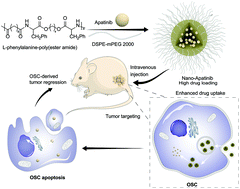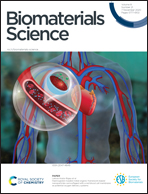Overcoming therapeutic failure in osteosarcoma via Apatinib-encapsulated hydrophobic poly(ester amide) nanoparticles
Abstract
Anti-angiogenic tyrosine kinase inhibitors (TKIs) have been proved to be effective in prolonging progression-free survival in advanced osteosarcoma. However, osteosarcoma stem-like cells persist for a long time and ultimately cause disease recurrence and therapy resistance. Here, we reveal that inefficient accumulation of Apatinib, an anti-angiogenic TKI, induces the expression of ribosome-associated genes in osteosarcoma, and confers apoptosis resistance. An engineered nanoscale delivery system based on hydrophobic poly(ester amide) has been established to effectively deliver Apatinib to improve the treatment. Notably, the considerable uptake by osteosarcoma cells enables this nanodrug to distribute increasingly inside the tumor. Furthermore, the delivered nano-Apatinib can suppress osteosarcoma stemness and enhance osteosarcoma stem-like cell apoptosis, and overcomes the crucial bottleneck of the unfavorable stem-like cell residue for TKI therapy. Importantly, nano-Apatinib significantly inhibits the osteosarcoma stem-like cell-derived tumor growth in contrast with free Apatinib, with minimal side effects. These results suggest that this Apatinib-loaded nano delivery system may serve as a promising strategy to solve the issue of TKI therapeutic resistance existing in advanced osteosarcoma.



 Please wait while we load your content...
Please wait while we load your content...